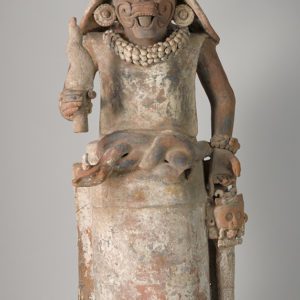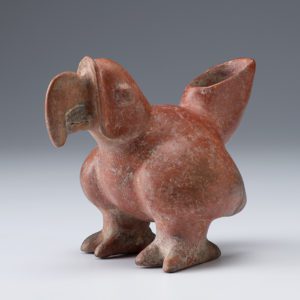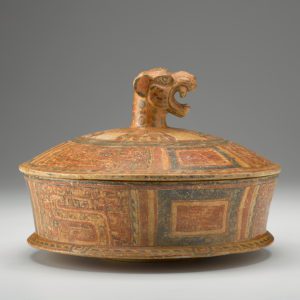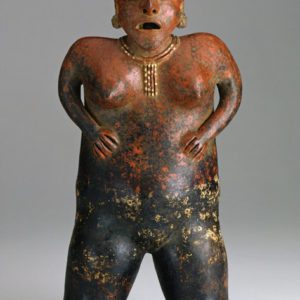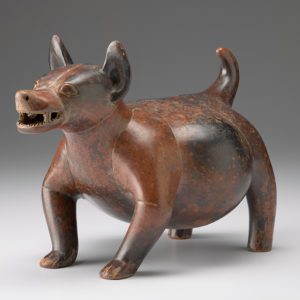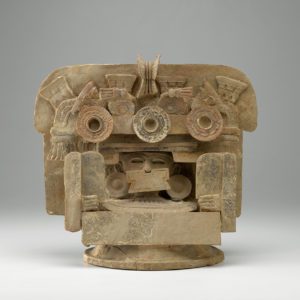Ancient American
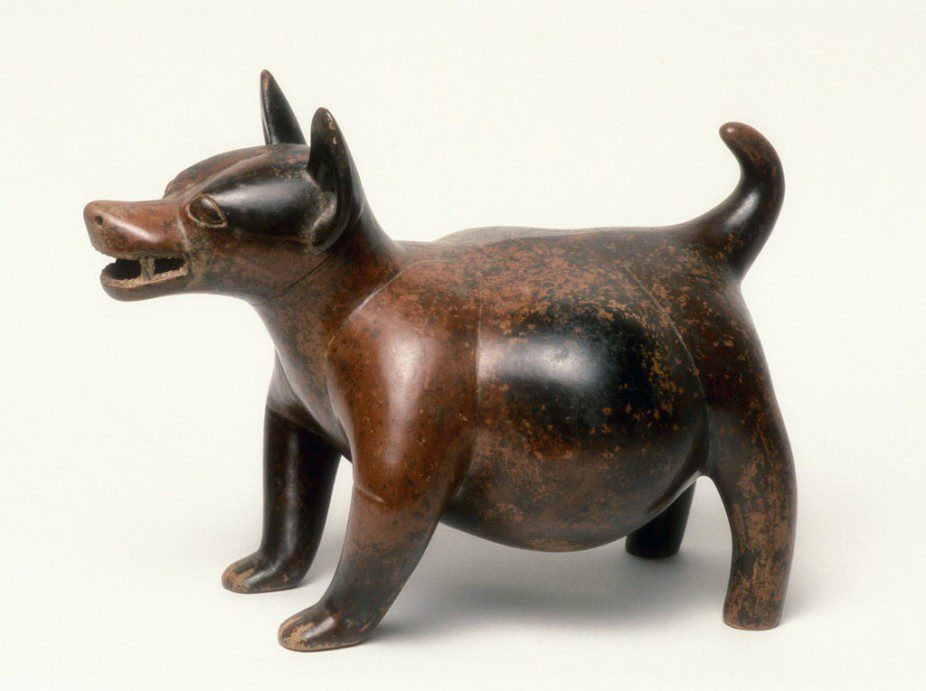
About
Two impressive Mesoamerican stone objects, a Ball Court Marker and a Ceremonial Ball Game Yoke, illustrate the attire of ball game players and a decorative piece of the court where the ritual ball game was played. Maya ceramic pieces are striking for their technical expertise and the creativity of represented symbols. These prestigious items were used by the Mesoamerican elite during political and religious events. The Veracruz Standing Female Deity is noteworthy for its size, its elaborate costume, and its enigmatic presence at funerary rituals. The large, expressive Nayarit human figures and the Colima vessels in the shape of animals such as parrots and dogs as well as humans and plants offer appealing glimpses of supernatural conceptions of the world through art.
Many of the most marvelous pieces in the collection come from South America, particularly the Central Andes. The group of Peruvian textiles includes different artistic traditions from the 6th, 14th, and 16th centuries. The five colorful pieces, made from various fibers, contain representations of animals, geometric designs, and human figures and display some of the finest weaving techniques in the Americas. Other remarkable South American objects include a Chimú funerary mask and a Sicán ceremonial drinking vessel (kero), both made out of gold and thought to be associated with the sun.
The Costa Rican collection is the largest and comprises an exceptional group of ceramics, including an important set of 8th-century Chiriqui and Diquis pieces. The gold and jade works serve as intermediary geographical and chronological links between the various artistic traditions in the collection.
The objects in this collection are currently being studied and examined and are not on view. The ancient American collection will be reinstalled in 2022.

